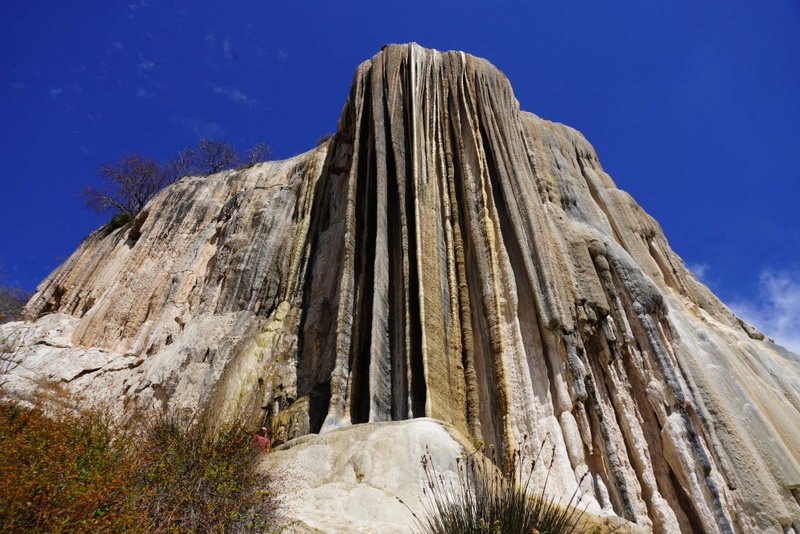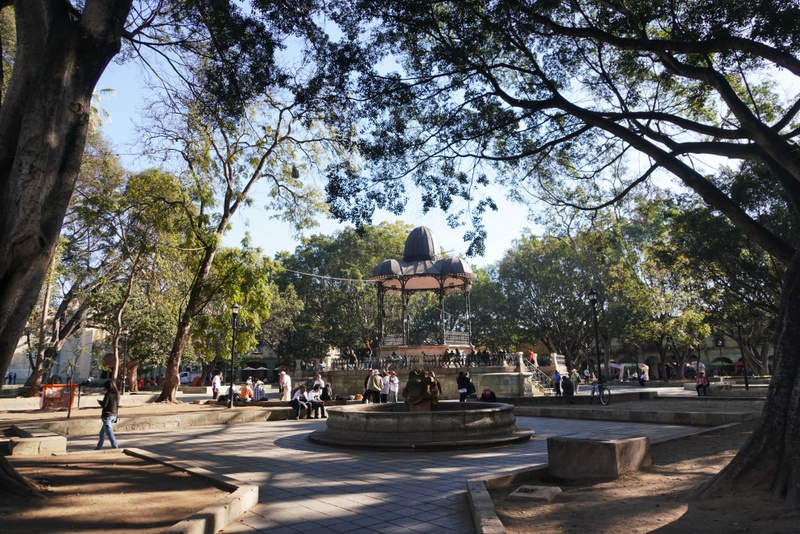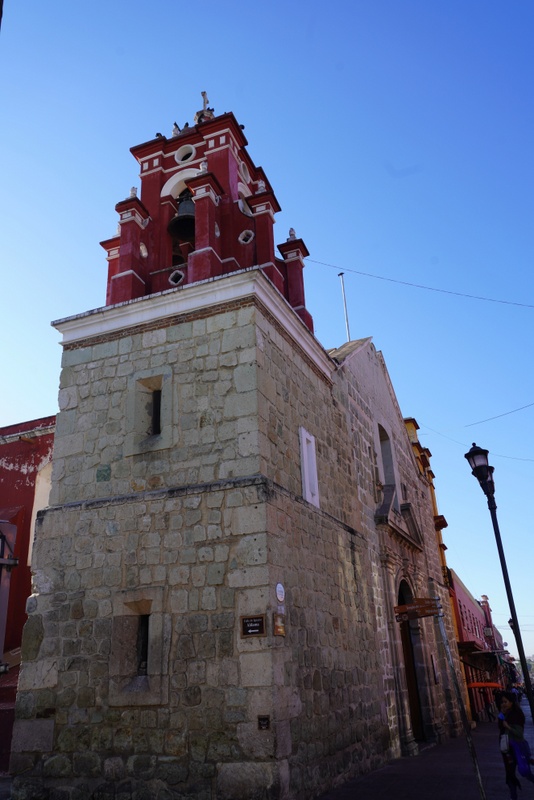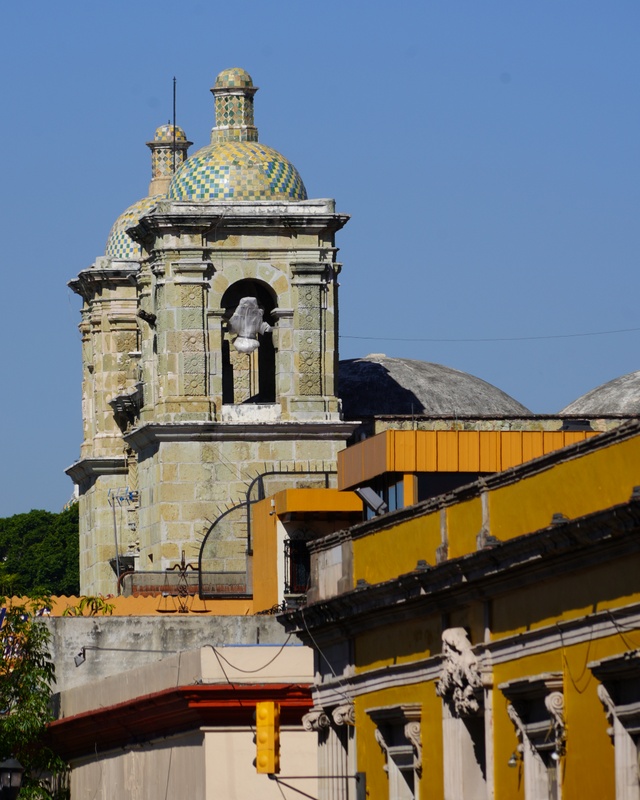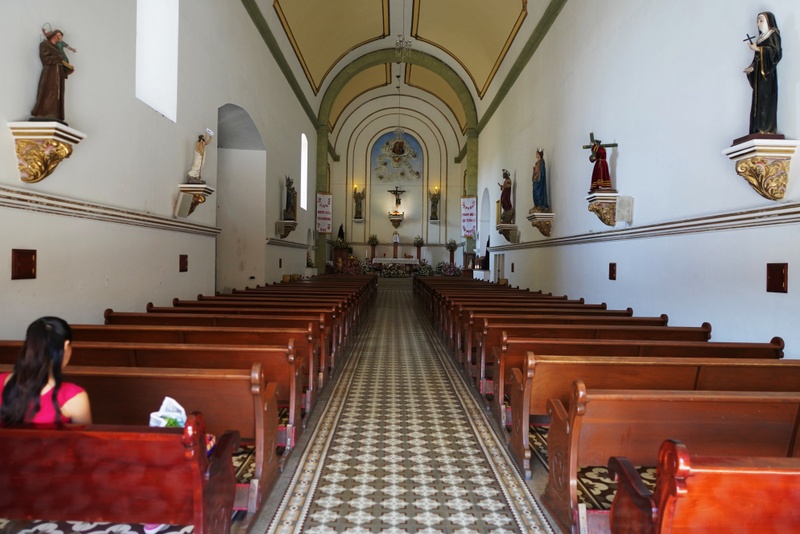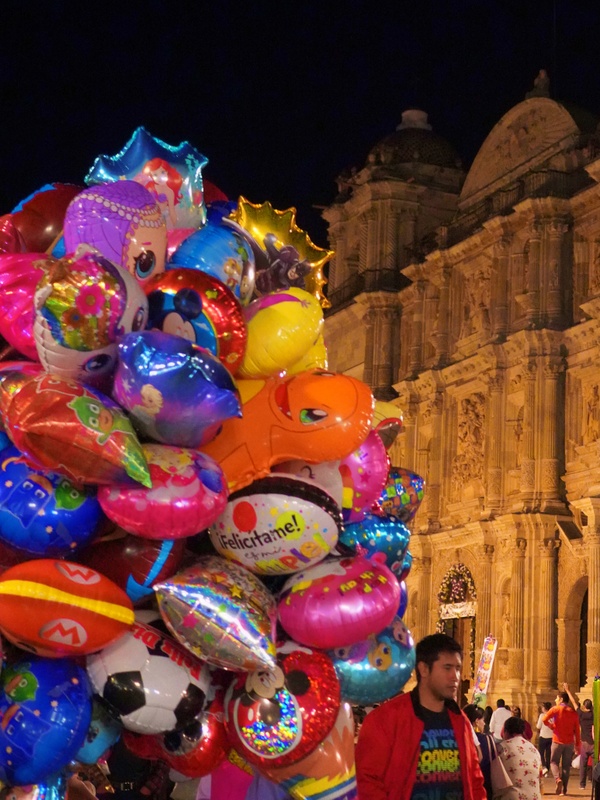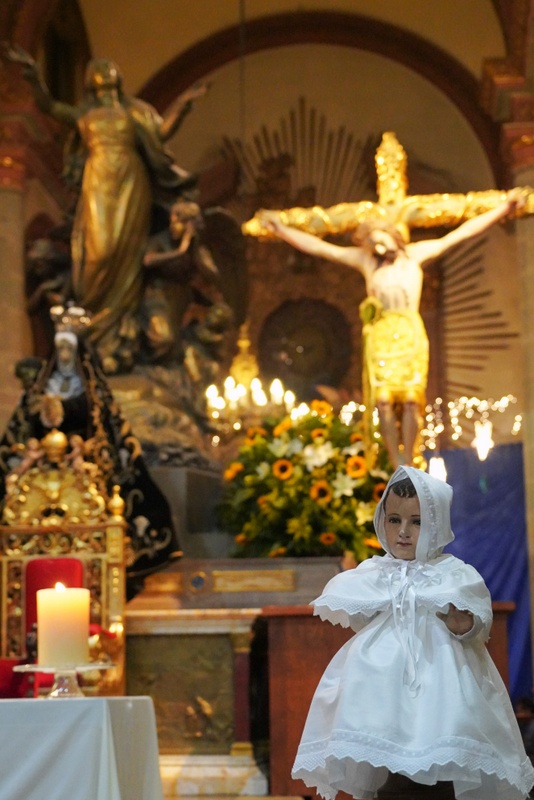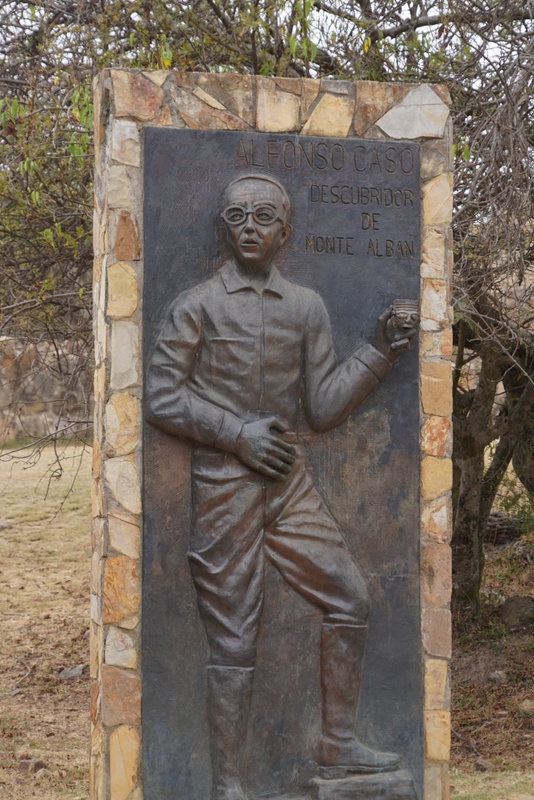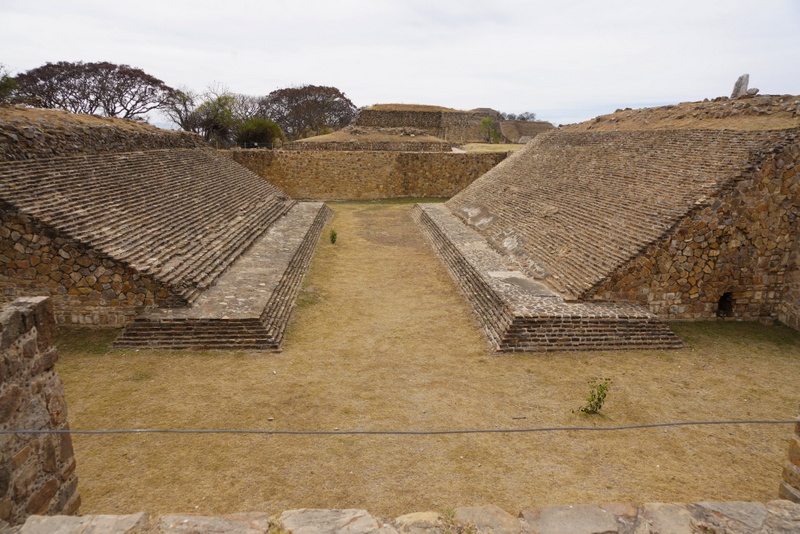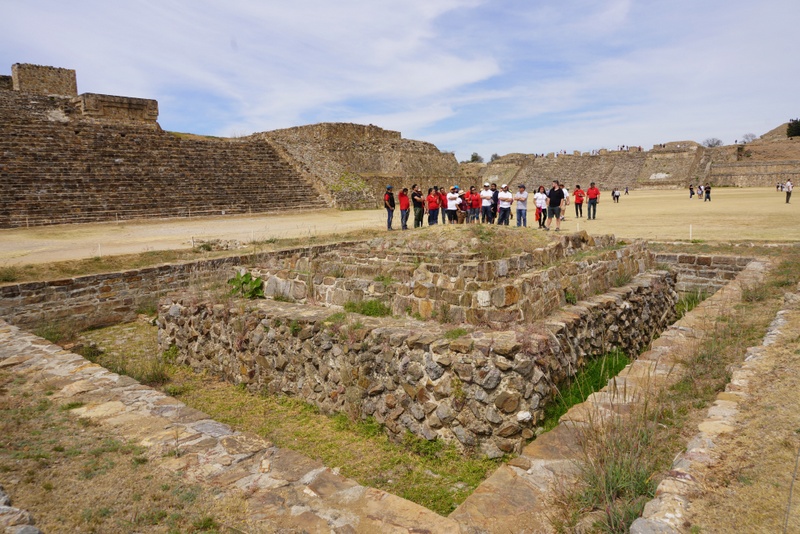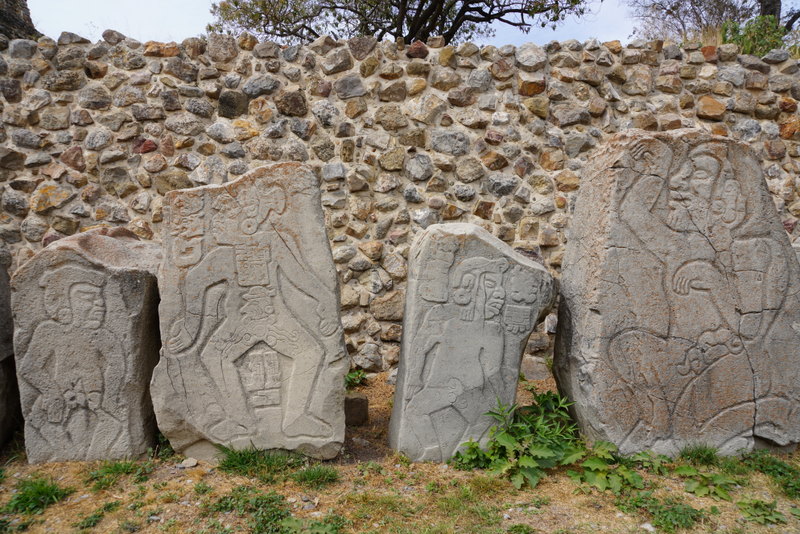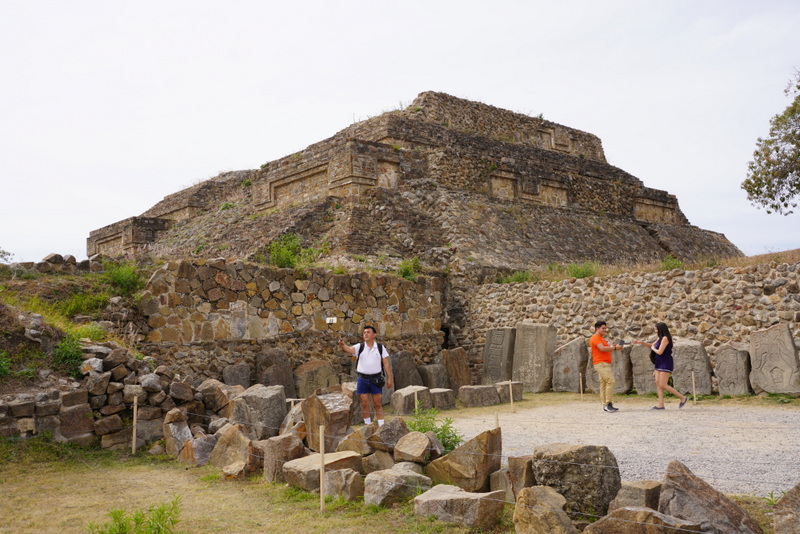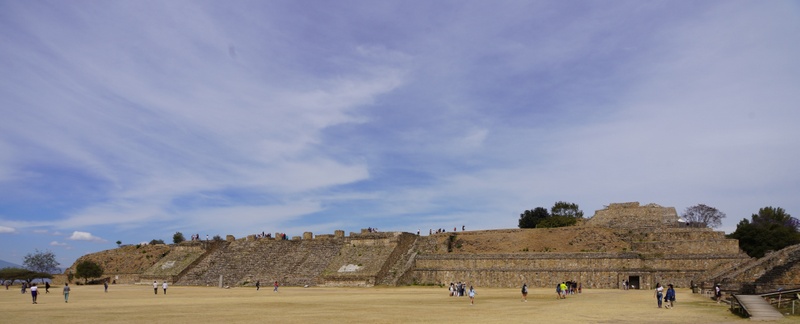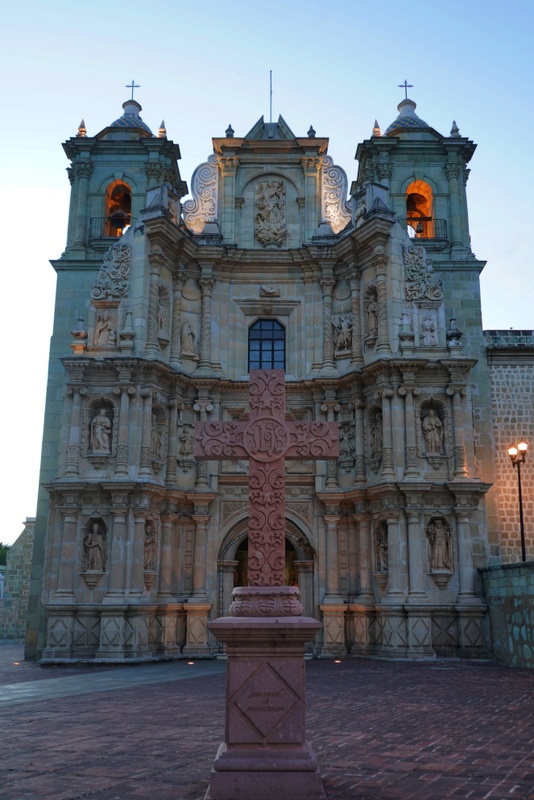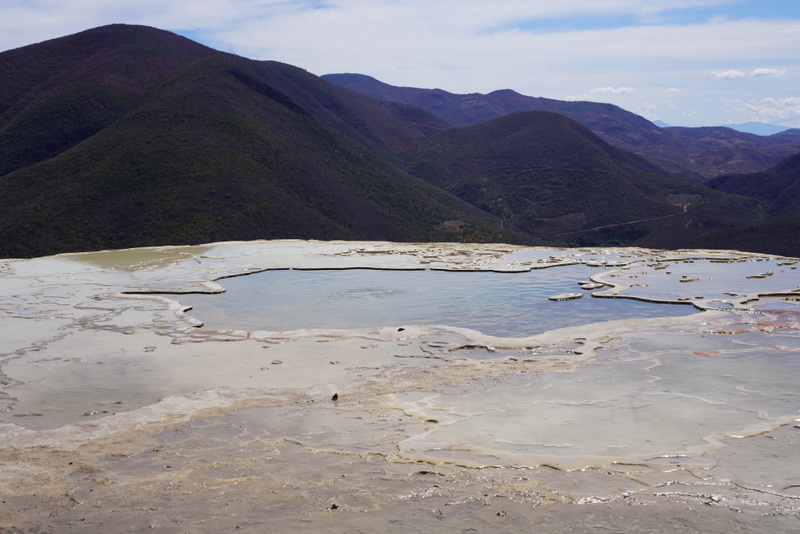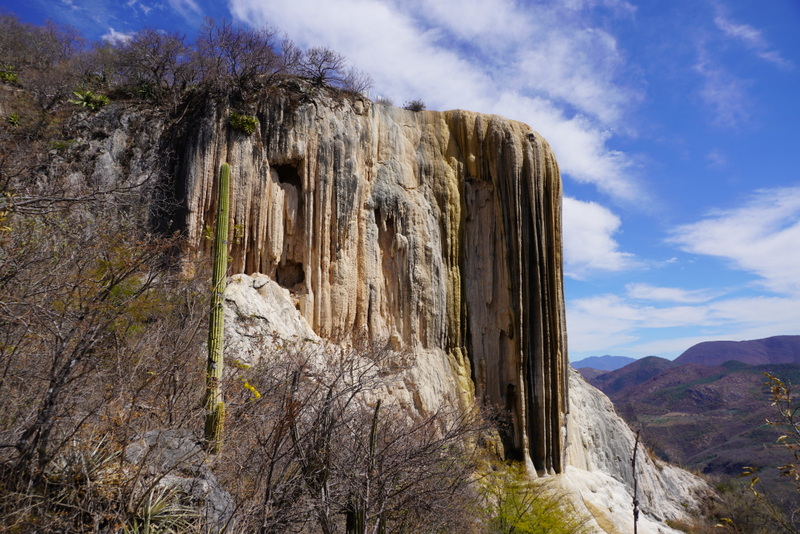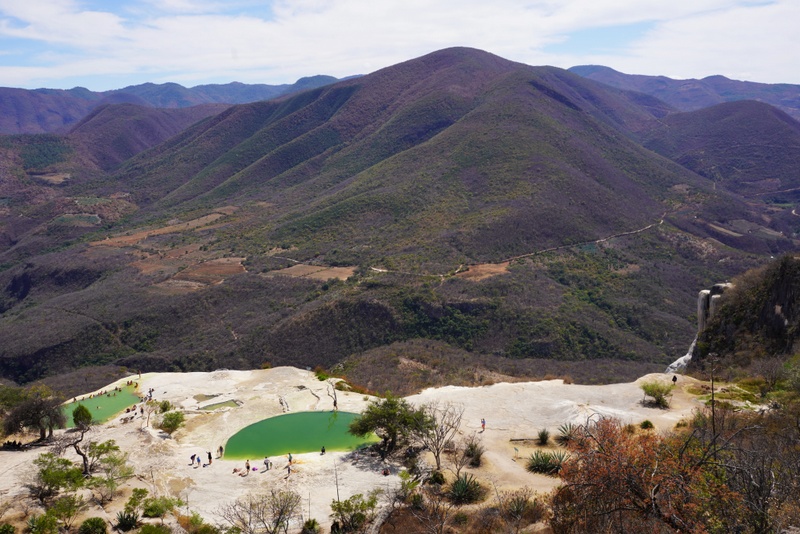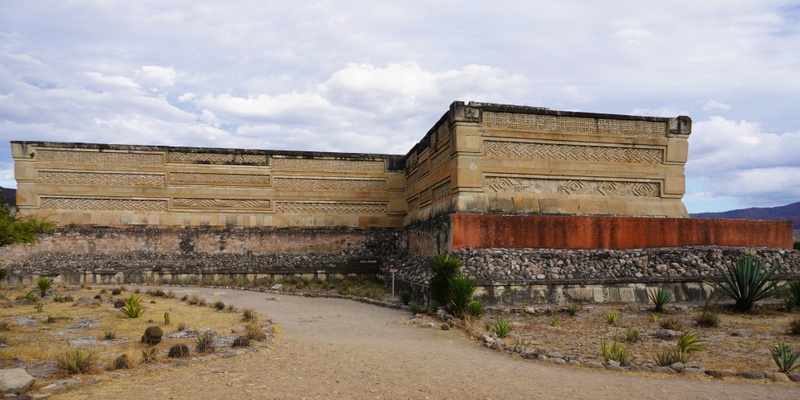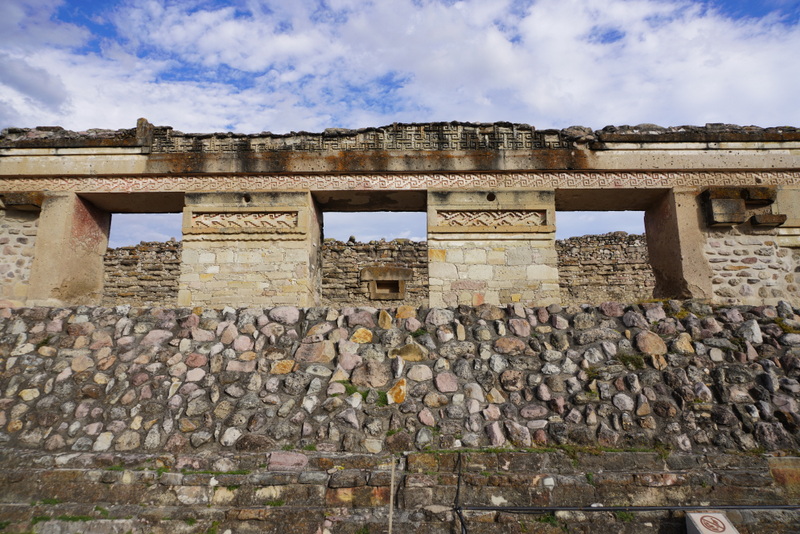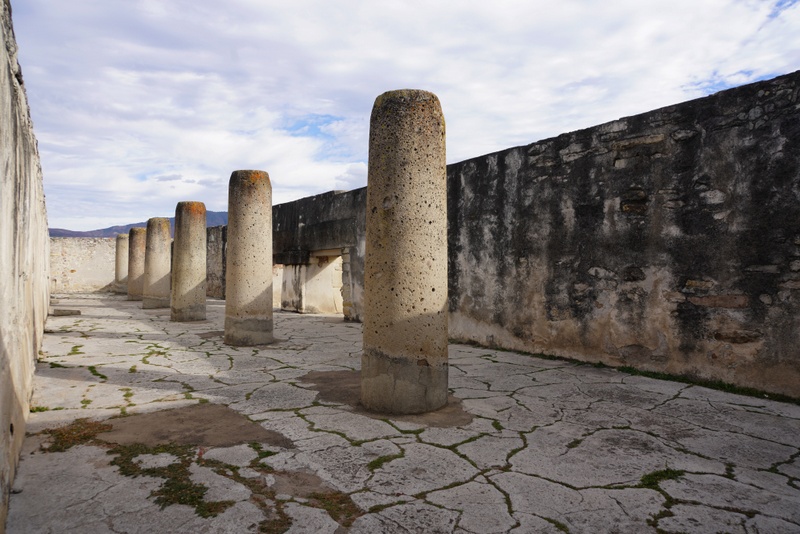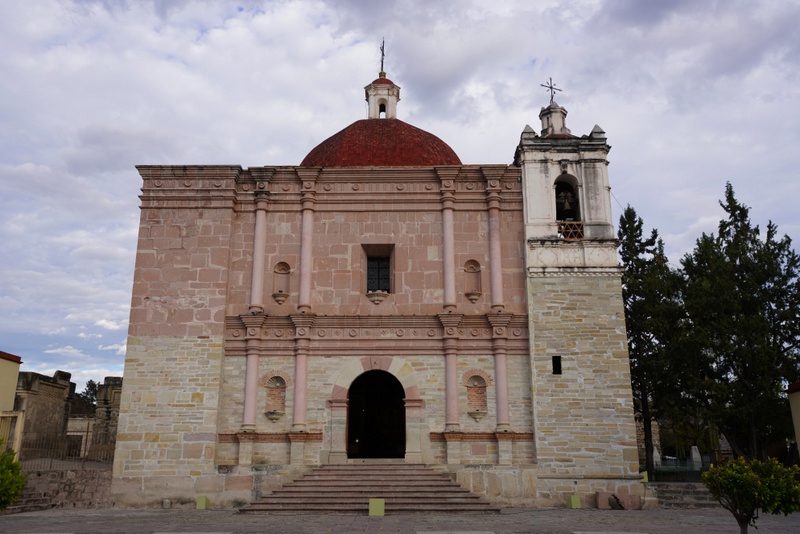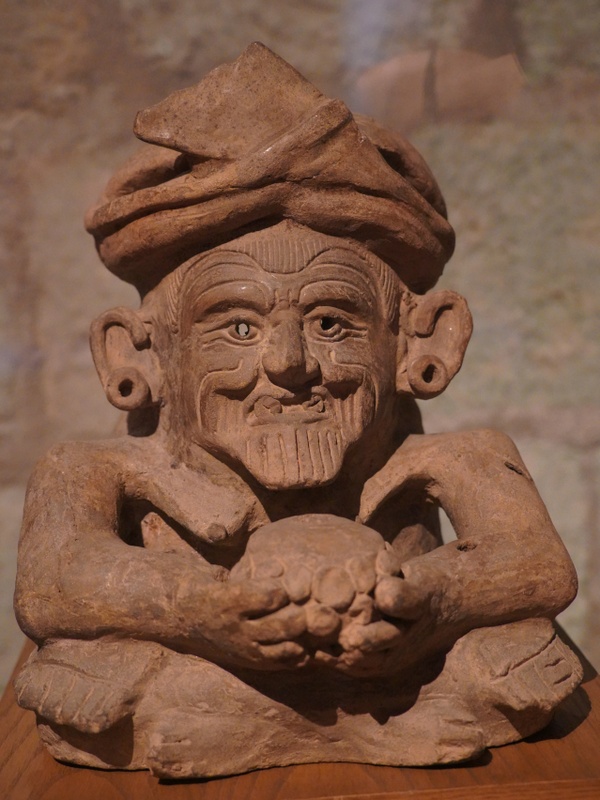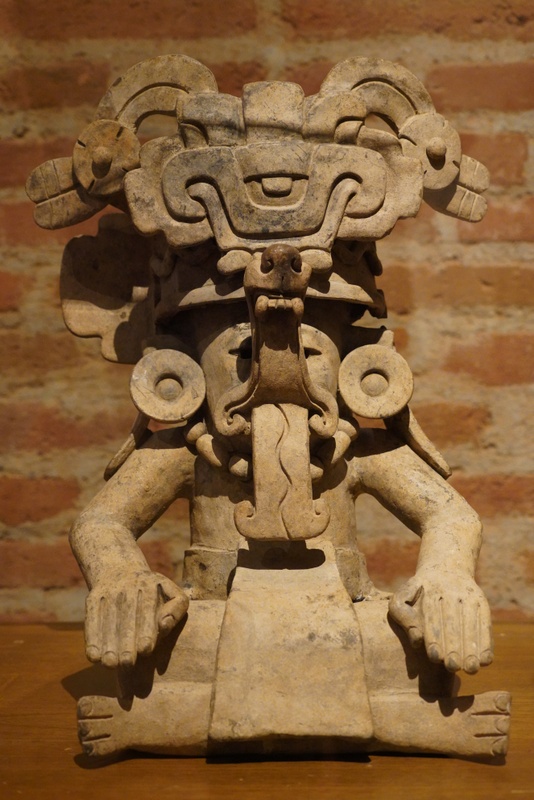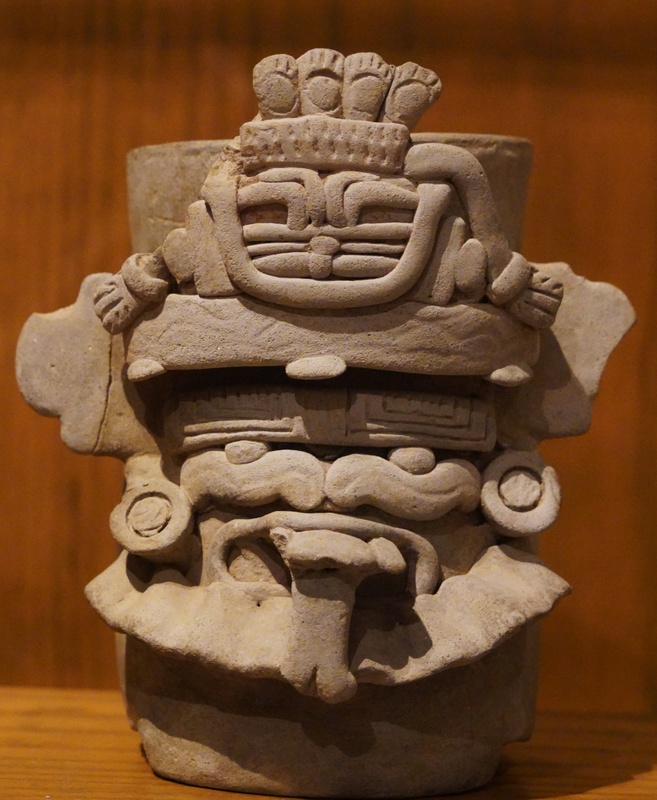Oaxaca February 2 – 5, 2020
February 2 Sunday: Oaxaca
Oaxaca de Juárez (Oaxaca) located in the Central Valleys region and founded by the Spanish in 1529, is rich in history with a large number of colonial – era structures and cultures of native Zapotec and Mixtec with a number of archaeological sites. The city together with the archaeological site of Monte Albán was named a World Heritage Site in 1987.
The city is nicknamed “la Verde Antequera” due to its prior name (Nueva Antequera) and the variety of structures built from a native green stone. In 1872, “de Juárez” was added in honour of Benito Juárez (1806-1872) President of Mexico from 1858 to 1872 who was a native of this state.
Oaxaca is one of Mexico’s major gastronomic centres and home of a month-long festival called the “Guelaguetza” which is held in July.
My bus for Oaxaca (bus fare 506 MXN) departed punctually at 8:25 am and I arrived in the Oaxaca bus terminal before 1 pm. I took a short taxi ride to Hotel Tobala (60MXN) close to the 20 de Noviembre Market (cooked food market) and the Benito Juarez Market (for hat, flowers, fish, meat, grains, cheese etc). This small local hotel is clean and cheap. I paid less than 1680 MXN for three nights! I slept even better than the grand hotel in Puebla.
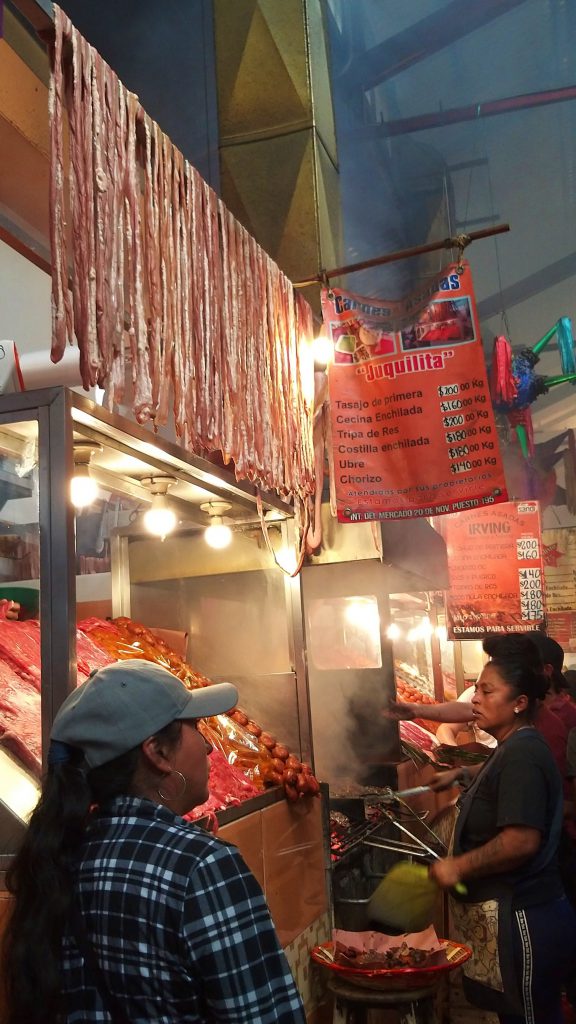
I find Oaxaca totally different from Puebla with a relax and blissful atmosphere. It was hot that I had to change into summer clothes before making my way to the atmospheric food market for lunch. Oaxaca is famous for its cuisine. As I was not hungry. I just had a light but delicious chicken soup for 50 MXN. I noticed many people were having tlayudas (also known as Mexican pizzas) which is large, crispy tortillas topped with beans, cheese, avocado, beef and chicken. I must sample one before leaving Oaxaca.
On my way out, I walked past the section filled with grilled meat stalls. The smoke, smell, crowds and atmosphere are unforgettable and mesmerising!
I found several interesting day trips and booked two tours to Monte Albán and Mitla (250 MXN each). Later, I found the same trips were sold for 200 MXN in some agencies.
The best way to enjoy this small, colourful and enchanting old colonial town is to stroll aimlessly and soak in the atmosphere. The charming and elegant historic centre filled with churches, street vendors, colourful colonial buildings, is awesome and atmospheric. I had a wonderful afternoon stopping wherever my mood took me.

I first stopped at the Zocalo (Plaza de la Constitución) which was planked by the grand Palacio de Gobierno, a green Oaxacan quarry-stone building. First built in the 16th century, it had been badly damaged by earthquakes and the present building was built in 1950s. I noticed many shoe-shining stands scattered in the park. A stage was set up beside the cathedral. Later in the evening, a band was playing on stage.
There are two dozen churches of note in the old city. The first one I visited was the Cathedral which honours the Virgin de la Assumption. Construction began in 1535, it was consecrated in July 1733. A bronze sculpture of the virgin, the work of Tadolini, was brought here from Europe.
The main streets – M. Alcala and G Vigil – are closed to traffic. The colourful building colonial houses line the streets. I visited two great contemporary art museums. The first one is the MUPO (Museum of Oaxacan Painters) located in a former 17th century mansion, where the works of Rodolfo Morales, Alejandro Santiago and Francisco Toledo are on permanent display. Then I went to the MACO, a contemporary art museum. Both had special exhibitions which are outstanding.
Next, I stopped by the La Sangre de Cristo Church (The Blood of Christ) before reaching the Temple of Santo Domingo, one of the most iconic landmarks of Mexico and Oaxaca. Surrounded by cacti outside the imposing façade, the interior of the church is ornate, impressive and positively drenched in gold.
It was close to 5 pm. I wandered around and went to the Nuestra Señora de Guadalupe Church (Our Lady of Guadalupe Church) which is still under renovation. The Llano Park in front of the church is green and spacious.
I chose a new route to return to the Zocalo. All streets in the area are leafy and lined with old residential houses, many of which have been turned into boutique hotels and guesthouses.
It was dark by the time I arrived at the Zocalo. I went into the Cathedral where a mass was being held. I was surprised to see many church goers, men and women, boys and girls holding a doll and seeking blessing from the priests. (Two days later, I found out that February 2 is the Day of Candlemas that commemorates the presentation of Jesus in the temple 40 days after his birth)
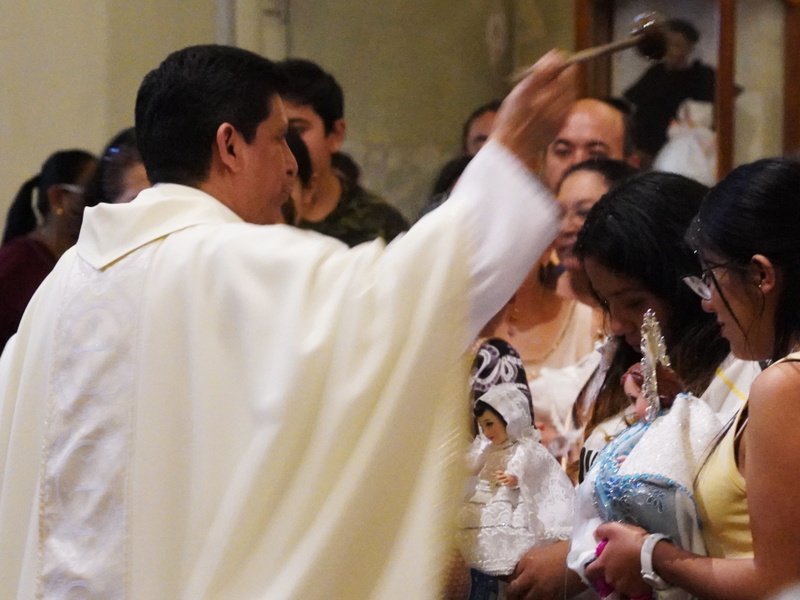
The Zocalo which has numerous cafes and restaurants, was filled music, sound, laughter and aroma of cooked food. The side streets were lined with vendors selling food, clothes and souvenirs.
I discovered the door of the old La Compania de Jesus Church (the Church of the Jesuits) was opened and went in. Once again, I saw locals coming in holding a doll in their hand.

I was not hungry and only had an avocado for dinner. I had a good sleep after two sleepless nights in Puebla.
February 3 Monday: The Monte Albán Route
I had breakfast in the food market. Like locals, I had a big bowl of beef soup (50 MXN) which is most delicious.
I was told to wait to be picked up around 9:15 am. The minibus arrived after 9:30 am and we went around the town to pick up more tourists. We eventually had a full bus with 16 passengers. We did not arrive at the archaeological site till 11 am. I knew I would not have enough time for this expansive site. (I should have taken a public bus to explore the site on my own).
Monte Albán founded around 500 BC (the end of the Middle Formative Period) by people from the nearby valley towns, was the capital of the Zapotecs and one of the first cities of Mesoamerica being populated during its peak. It reached its peak around 600 AD with 25,000 habitants and flourished until 750 AD.

The partially excavated civic-ceremonial centre of the Monte Albán site is situated atop an artificially-levelled ridge (about 1,940m above sea level) which rises some 400 m from the valley floor. Large-scale scientific excavations were undertaken under the direction of Mexican archaeologist Alfonso Caso in 1931. A large number of monumental, residential and civic -ceremonial structures, hundreds of tombs and burials and ceramic artefacts have been unearthed.
The Main Plaza (approximately 300m by 200m) is the monumental centre.

The plaza is delimited by the North Platform and South Platform accessible via monumental staircases.
The eastern and western sides of the plaza is bounded by a number of smaller platform mounds on which stood temples and elite residences, two ball courts.
There are also a few platforms in the centre with ceremonial structures.
There are many carved stone monuments throughout the plaza. “Danzantes” (literally dancers) represented naked men in contorted and twisted poses. are founded mostly in the vicinity of Building L. Over 300 “Danzantes” stones have been recorded to date.
I was arranged to follow an English-speaking guide and to return to the bus by 12:30 pm. The guide tried to explain the history of the site, the origin of the name and the Mexican archaeologist who excavated the site. I found him wordy and preferred to explore the place on my own. Anyway, I only had time to climb up the South Platform before returning to the bus. I did not have a chance to visit the small museum on site.
While I was punctual, the others did not board the bus till 12:45pm. I was annoyed as I could have visited the museum as well. I must revisit the site if I return to Oaxaca one day.
The second stop was San Antonio Arrazola to see alebrijes (woodcarvings). I have already seen most exquisite works of this nature in Cholula and MACO. We had 30 minutes here. Waste of time!
We stopped in a local restaurant for an hour for lunch (150 MXN for a wholesome buffet). If I could have skipped lunch and San Antonio Arrazola, it would have been perfect.
The fourth stop was at Cuilapam de Guerrero to see an imposing 16th century convent. This place was the most important evangelizing centre in the Central Valleys. The open church has no ceiling. The chapel was built in such a way to offer the service to indigenous people.
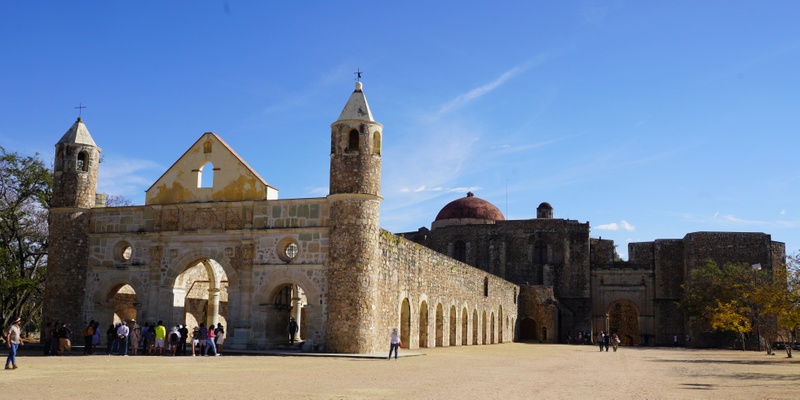

San Bartolo Coyotepec is best known for its black clay pottery. For centuries, pottery has been made here with a grey matte finish. In 1950s, Dona Rosa devised a technique to give the pieces a shiny black finish without painting. We spent over half an hour at the Doña Rosa Workshop and watched a demonstration.
I was back in Oaxaca around 6 pm. It was not dark yet and I had time to visit the Basilica de la Soledad at the end of Av Independencia. Erected between 1682 and 1697, this basilica has baroque doorways with most intricate carving.
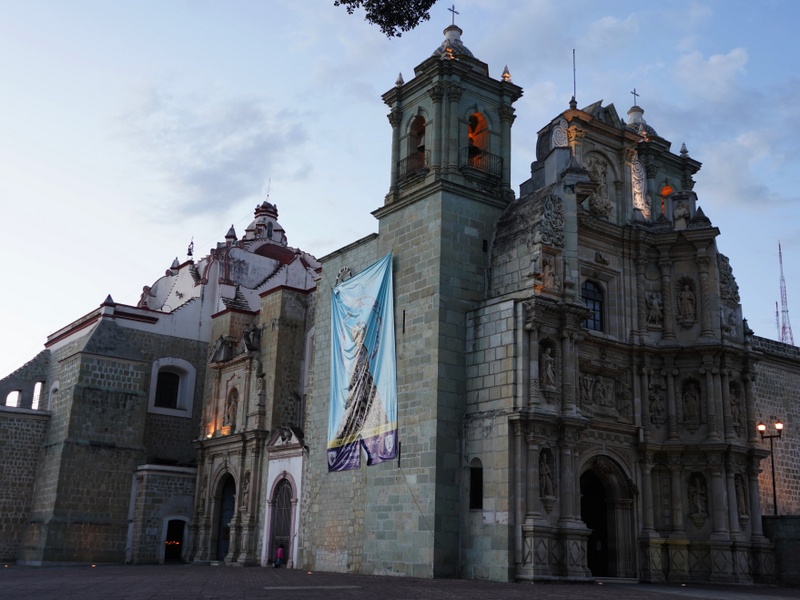
After a big buffet lunch, I skipped dinner and had a quiet evening.
February 4 Tuesday: The Mitla Route

I returned to the same beef soup stall for breakfast. My friend greeted cheerfully. I visited the San Juan de Dios Church which was originally built by Santa Catarina Martir religious order and re-dedicated to San Juan de Dios at the end of the 17th century. It was known as Oaxaca’s first Cathedral because Juan Lopez de Zarate the city’s first bishop who arrived from Spain, established his diocese here.
Today, I had a more enjoyable tour with five stops. The bus was not full with only a dozen of tourists. I sat next to Ana, a young lady from Mexico City who speaks English.
First, we went to see the world’s thickest tree – Santa Maria del Tule. The 2000-year-old 40m-tall Montezuma cypress has a diameter of 52.58m and weighs over 500 tons.
Then we spent over half an hour in a workshop of a weaver in Teotitlan. The weaver showed us how the organic / natural dye works. By adding lime and salt to some organic material, he got red and blue colours!
The best stop of the day was Hierve el Agua, a set of natural rock formations which resemble cascades of water. Located some 70 km east of Oaxaca city, the site consists of two rock shelves or cliffs which rise between 50 and 90 metres from the valley below. They have been created by fresh water springs, whose water is over saturated with calcium carbonate and other minerals. As the water scurries over the cliffs, the excess minerals are deposited, much in the same manner that stalactites are formed in caves.
There are two large artificial pools for swimming and a number of small natural pools.
We had just an hour and a half at this beautiful site. I barely had enough time to talk to the bottom of the fall for a quick glimpse before climbing up the steep slope.
The views from the pools are excellent. I wished I had time to sit by the edge of the pool to enjoy the magnificent landscape. I think a visit in the late afternoon or just before sunset would be much better. The colour and landscape would be even more impressive.
We had lunch around 3 pm. The restaurant is more up-market and I paid 200 MXN for a buffet and a beer. But the Mexican food I had the day before was more authentic and wholesome! I also paid 140 MXN as entrance fee for three attractions.
After a late lunch, we went to see the ruins of Mitla located 44km from the city of Oaxaca. This is the second most important archaeological site in the state of Oaxaca and the most important of Zapotec culture. While Monte Albán was the most important political centre, Mitla was the main religious centre. The name Mitla is derived from the Nahuati name Mictlan which was the place of the dead of underworld. The name Mictlan was Hispanicized into Mitla by the Spanish.

Construction of Mitla as a ceremonial centre began in 850 AD. Mitla is one of the few sites that originated in the Classic Period and represented the most developed architecture of the Zapotecs and is the product of the syncretism of Mixtec and Zapotec design. This site is most known for the elaborate and intricate mosaic fretwork and geometric designs that cover tombs, panels, friezes and the walls. These mosaics are made with small, finely cut and polished stone pieces which have been fitted together without the use of mortar. The fretwork here is unique in all Mesoamerica.
The site is not big consisting of five groups of buildings with a fence of cactus plants surrounding much of it. The South, Adobe, Arroyo, Columns or Palace and Church (North) Groups. All buildings are aligned with the cardinal directions.
The Columns and Church Groups both located at the north end of the site are the two best preserved groups. Fully excavated and restored by the early 1980s, both consist of rectangular courtyards surrounded by one story rectangular buildings with long narrow rooms.
The South and Adobe Groups have been classified as ceremonial centres with central plazas surrounded by mound structures.
The Columns Group with two entrances to the outside facing south: The entrance room contains immense columns which support the roof. The north wall has a small opening facing the patio, supposedly for crossing into the afterlife. The main building is called the Palace or the Grand Hall (36.6 by 6.4m) of Columns (six columns). The buildings have elaborate tombs where high priests and Zapotec rulers were buried. The courtyard is intricately decorated in mosaic fretwork and geometric designs.
The Church Group (Church of San Pablo) was built by the Spanish on top of the pre-Hispanic platform. In this area, there are living quarters of the priests which walls are covered by intricate mosaic fretwork and murals depicting mythological scenes and characters. There are also tombs under some of the buildings. I walked inside the present-day church but had no chance to find the mosaic or tombs.
We ended our visit with mescal tasting in Santiago Matatlan. I had a few sips and found it too strong!
February 5 Wednesday: Oaxaca – Chihuahua by Air
As my flight would be leaving around 3 pm. I therefore had a whole morning to visit the Museum of Culture located in the former convent of Santo Domingo. I spent over two hours and was exhausted by the time I came out after midday.
The museum is well-laid out. I began my tour on the ground floor and saw a special exhibition on treasures from Calakmul, a Maya archaeological site (another World Heritage Site) 35 km from the Guatemalan border. Calakmul was one of the largest and most important ancient cities ever uncovered in the Maya lowlands. The most impressive exhibit here is the jade mosaic mask discovered in Tomb 4 which is believed to be that of the late 7th century king Yuknoom Yich’aak K’ak.
Across the hall is another treasure – the Library Francisco de Burgoa with a collection of over 30,000 volumes published between 1484 and 1940.
I walked up the grand staircase and visited countless rooms with exhibits from ancient times all the way to modern-day. The exhibits are systemically and thematically presented, featuring Oaxacan medicine, music, language and pottery.
In one of the sections, I saw the “Treasure of Tomb 7”, a cache of delicate gold jewellery, precious stones and carved bones discovered in Monte Albán tomb. The presentations and illustrations are excellent.
The Ethno-botanical Garden with more than 1,000 species of plants from the region is also worth visiting. Owing to the setting of the museum and its contents, the museum a ‘must’ for visitors to Oaxaca.
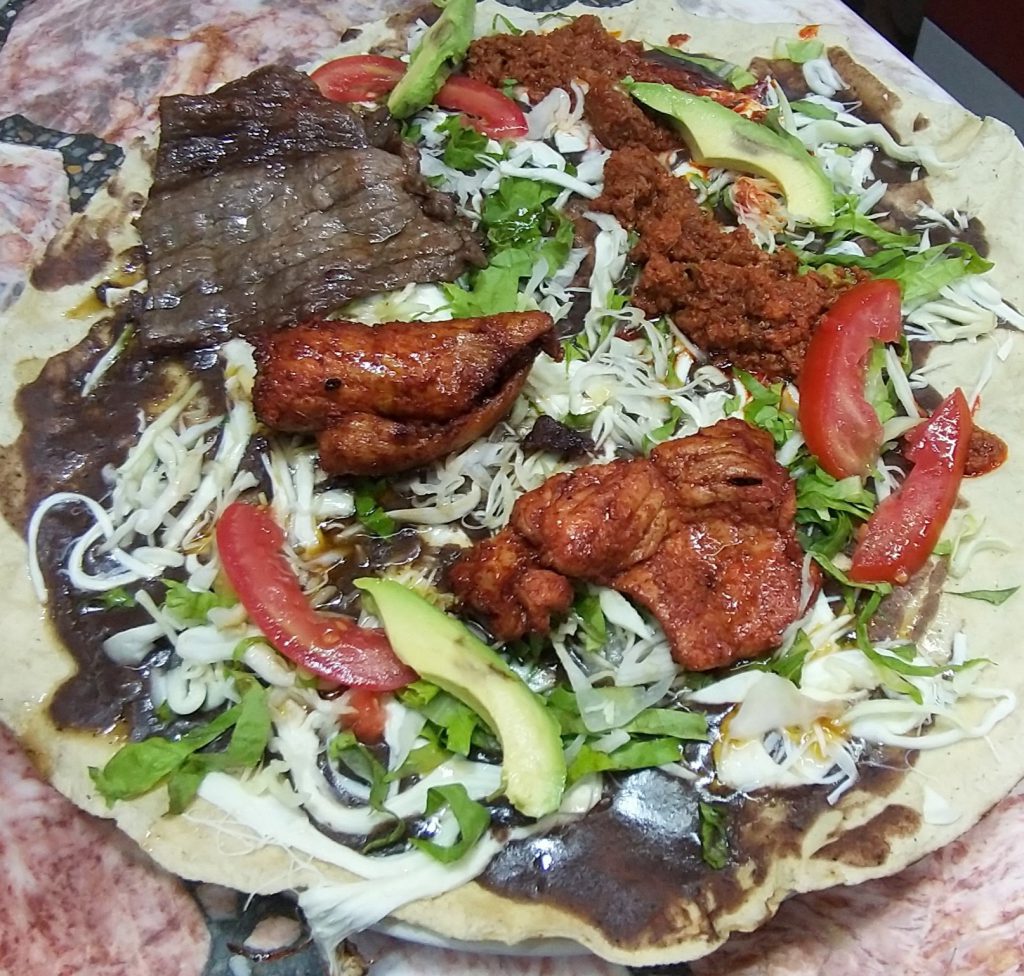
Before leaving the city, I returned to the food market to have a tlayudas. I paid 90 MXN for a signature one with everything! It was too big and I could only eat half of it. I had the left-over with me for dinner. I also tasted chapulines (grasshoppers) which is a speciality here. But I do not like the taste.
I took a taxi to the airport at 1:30 pm (200 MXN). My 3 pm flight to Mexico City was delayed for an hour. As a result, I missed my 6:45 pm flight to Chihuahua. It was almost midnight (instead of around 8:30 pm) when I landed. By the time I settled down in a hotel, it was almost 1 am! What a tiring day!



